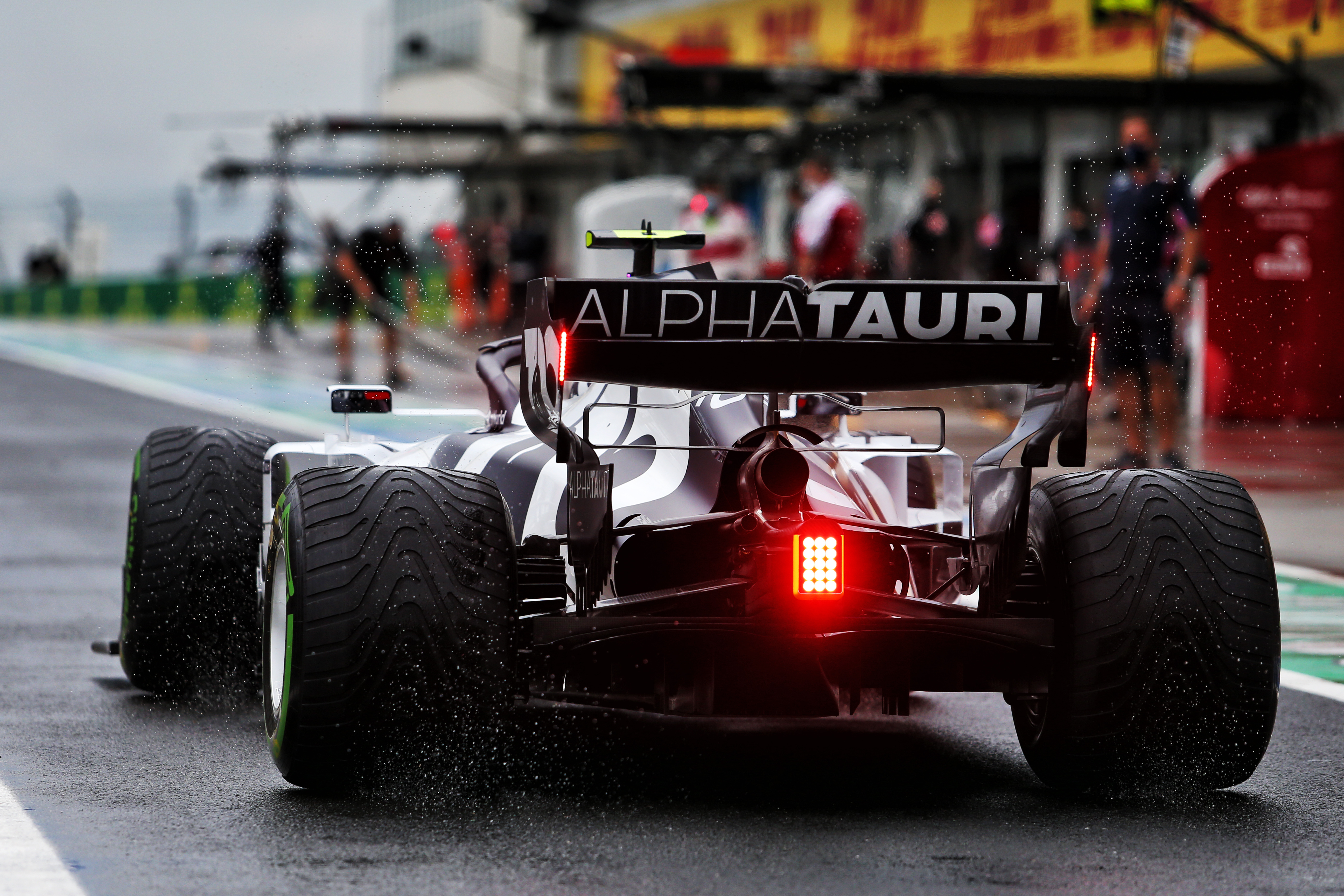Up Next

Pirelli has revealed that Daniil Kvyat’s high-speed crash in the British Grand Prix was caused by the right-rear wheelrim overheating, rather than a slow puncture as previously suspected.
Following further analysis of the tyre, and in collaboration with AlphaTauri, Pirelli has now put this down to the excess temperature in an area of the car where the team has had problems previously this year.
“Together with Scuderia AlphaTauri, Pirelli has concluded an investigation into the precise cause of the incident that resulted in Daniil Kvyat hitting the wall during the British Grand Prix on lap 12,” said a Pirelli statement.
“A separate mechanical issue led to the inside of the right-rear wheel rim overheating, which in turn burned the bead of the tyre (the part of the tyre that connects the rubber to the wheel).
“As a result, the bead was no longer able to seal the tyre onto the rim. This is what caused the subsequent deflation, with the tyre itself playing no part in the cause of the accident.”
Kvyat initially blamed himself for the accident, but the team subsequently told him that a puncture was suspected with on-board footage showing clearly that the tyre was deformed.
Speaking before the conclusion of the investigation earlier today, he explained why he initially felt he was to blame.
“The fact is that once the puncture happened, I was out of control and just a passenger in the situation,” said Kvyat.
“It was a bad place to happen. For sure we will know the full details and the reason behind it very soon.
“I had a problem on my gearbox and was doing a lot of switches at the moment. I was doing that for two or three laps, I was doing so many changes and in that moment I was looking at the screen when the tyre gave up there was a puncture.
“So I didn’t really understand what happened, it was a weird and confusing incident. It never happened before in my career that the tyre would give up in such a high-speed corner.
“The first thing I thought was maybe there was some kind of kerb or grass I didn’t know about, but looking back at it there was absolutely nothing I could do about it.”

Gary Anderson says…
The braking on these cars is a lot more complicated than they used to be in the pre-hybrid era. At the front, it is completely hydraulic pressure generated by the driver’s force on the brake pedal. At the rear it is much more complicated.
It is still generated by the force on the pedal, but then a certain percentage of that goes into the ERS re-harvesting and a certain percentage from hydraulic pressure. Because of this and to save weight, the rear discs and calipers are much smaller than the front.
Normally, to accommodate the weight transfer onto the front axle under braking about 56-60% of the braking is from the front axle, 40-44% from the rear axle, so it’s not uncommon for the rear discs and calipers to be just that little bit smaller, but currently more than 50% of the 40-44% is achieved with the re-harvesting. If it all works well then no problem with very small rear discs and calipers.
If, for some reason, the re-harvesting has any sort of problems it’s all down to the discs and calipers to do the job, so with them being as small as they are it only takes one or two reasonable stops to overheat them. On top of that, the actual rear brake ducts do very little to brake temperature, they are mainly generating downforce directly on the rear tyre contact patch and optimising the performance of the diffuser.
If it goes wrong, the next thing is that extra heat just builds and goes into the rim and then the tyre and from there on in anything can happen.




